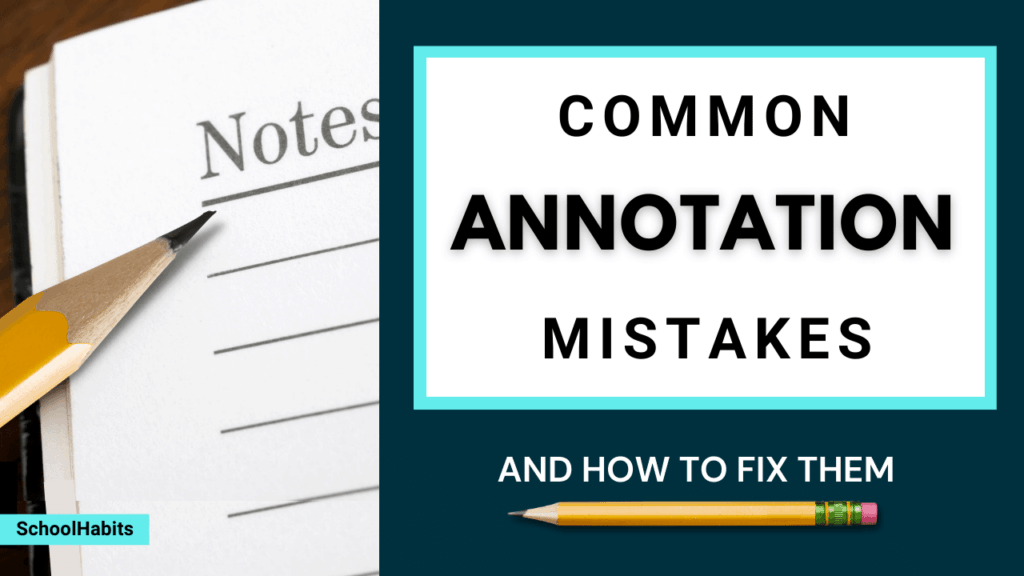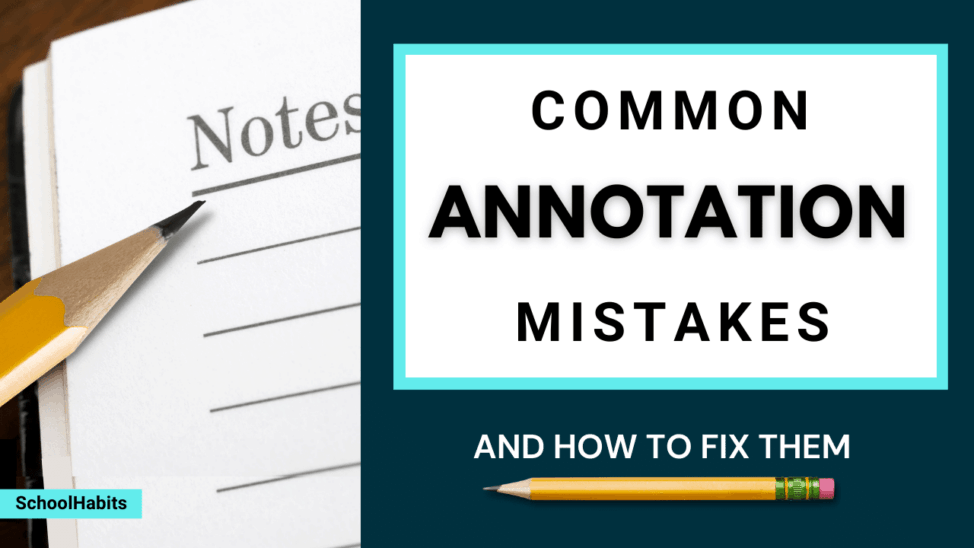
Katie Azevedo, M.Ed.
Below, I share 6 common annotation mistakes I see students make all the time when reading and marking up text. Check to see if you’re making any of these mistakes, and then follow the solutions I give for up-leveling your annotation game.
Common annotation mistakes and how to fix them
1. Not annotating
Starting basic here. Biggest annotating mistake ever is not thinking you need to annotate. If you’re reading intellectual, academic text that contains information you will need at any point in the future, you should annotate it. No, you will not remember it. Unless you’re reading an incredibly shocking text that causes a rapid increase of memory-enhancing brain chemicals (adrenaline, cortisol), then the information you’re reading will only stick around in your working memory temporarily. This is basic brain science.
Solution: Commit to annotating all text that isn’t in the category of pleasure reading. If the text is for school, work or personal development, commit to at least basic annotations, even when your mischievous brain-voice tries to convince you that you’ll “remember” it.
If you’re not convinced about the power of annotating and how it can actually make your (school) life easier, then you need to read this.
2. Annotating when it’s unnecessary
Common annotation mistake #2 is annotating text when there’s no need to. See above for all instances you should take notes; what remains is pleasure reading. The problem with people thinking they “should” annotate everything is that they often become so overwhelmed and annoyed with the process that they ultimately reject the practice altogether.
Solution: Don’t annotate pleasure books, unless you really want to. If you’re a bonafide book aficionado who loves the written word for the sake of language, then a) I love you, and b) consider keeping a reading journal where you can capture any memorable text you encounter in your reading.
3. Having no purpose
Another of the top common annotation mistakes is not having a purpose for your annotations. Without a purpose, you’ll likely end up annotating not enough or way too much. If you’re reading text that you plan to incorporate into an essay, then that becomes your purpose. If you’re reading a text to acquire knowledge, then your purpose becomes to find main ideas and key points. If you’re reading a text to identify the theme, then annotate all references to theme or symbols of that theme.
Solution: Know your purpose. Think about why you are reading the text and what you’re supposed to get from it. Annotate for anything that aligns with what your intention is.
4. Just highlighting
Highlighting without incorporating text is pointless. Unless the text is very simple and short (about a paragraph), and you’re annotating for just one purpose (for example, symbols), you need to accompany your highlights with text. If you don’t, then once the text leaves your working memory (within minutes), you won’t be able to recall why you highlighted something. For every highlight, you should write at least a symbol or a few words – as I describe in common annotation mistake #5.
Solution: Use the Highlight and Rewrite strategy. (Seriously, though.) Also, if you’re confused about what to highlight, here are 11 ideas to get you started.
5. Using full sentences
Annotations are not meant to be mini-essays in the margins. Fragments, single words and bullet points are best. You can even use annotation symbols like stars and exclamation points, and certainly abbreviate whenever possible.
Solution: Know these 11 annotation strategies.
6. Not annotating for personal reactions
Most students are so focused on trying to annotate the “right things” that they forget the most important purpose of annotating: your own personal response to the text. Your annotations should always include your genuine thoughts and reactions to the text. This includes questions when something is unclear, connections you make to other texts or to yourself, points you want to bring up in class, whether something is interesting or new to you, or even when things get boring. Yes, it’s okay to write “this part is boring” in the margins!
Solution: You might not love what you’re reading, but try to notice any personal responses you have to the text, and write them down. This skill is called metacognition (thinking about thinking) and the more you do it the better you get.
Here are a few of my top annotation resources if you want more:

